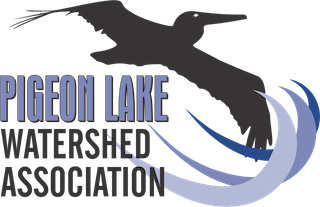Community Lake Observations
Research & Monitoring is a critical component in determining beneficial management practices to protect and enhance water quality. The Pigeon Lake Watershed Management Plan mandates the advancement of science. PLWA is working with our healthy-lake partners to expand our knowledge on applied lake water quality, cyanobacteria formation, nutrient loading and shoreline assessments.
Technical Summary - Appendix C is the science-based foundation of the Pigeon Lake Watershed Management Plan. This is an update on information found in the 2006 State of The Watershed Report and provides benchmark updates to many of the environmental indicators relevant to Pigeon Lake and its watershed. The technical summary was prepared by Adam Kraft and Théo Charette from CPP Environmental, with hydrological contributions from Alberta Environment and Parks.
Watershed Interactive Map - This online map has been designed to provide Pigeon Lake residents and researchers with the tools to engage in PLWA stewardship initiatives, view significant areas within the watershed, and actively monitor the lake’s health.
We are seeking Citizen Science volunteers to help us gain more knowledge about the lake and watershed. Volunteers can participate in collecting lake observations, measuring water clarity, collecting creek samples, monitoring for invasive mussels, and many other opportunities. Your participation will contribute to filling in knowledge gaps about the local environment. Join the Pigeon Lake Watershed Association in supporting environmental stewardship for our watershed!
LakeObserver - Volunteers will be monitoring for changes in the shoreline, fish and wildlife, water quality, extreme weather events, and checking for invasive species.
Secchi Dip-In - The Secchi Dip-In program involves citizen scientists measuring water turbidity, gathering data on the water clarity at Pigeon Lake. Our data contributes to the Secchi Dip-In database created by the North American Lake Management Society.
CreekWatch - CreekWatch monitors the creeks in our community by having citizen scientists collect samples from creeks/outfalls around Pigeon Lake. These samples are sent to a lab for testing for water chemistry and pollutants.
Mussel Monitoring - The mussel monitoring program checks for invasive Zebra and Quagga mussels to control their potential spread into Pigeon Lake. If found in the lake, they would filter water to the point of removing food and nutrients that other native aquatic species rely on, therefore altering the food web. The clearer water would also create prime conditions for algal blooms.
eBird - eBird has applications in birding data ranging from research and monitoring to species management and habitat protection. It is a tool that allows anyone around the world to store their birding observations, photos, and sound recordings, so that they are available for educators, scientists, and birders around the globe. If you are interested in bird watching, join the eBird citizen science program! Your sightings will help contribute to conservation decisions and bird research worldwide.
iNaturalist - Your observations of plants and animals can contribute to biodiversity science! iNaturalist shares the findings made by people from around the world with scientific data repositories to help scientists find and use your data. All you have to do is observe.
Winter LakeKeepers - The Winter LakeKeepers program has volunteers monitor various indicators that improve our understanding of lake ecology and its health in the winter. This program is best for those who ice fish, however anyone is free to participate! Lakes are to be sampled at least once during the ice-on period, which coincides with Alberta’s ice fishing season (December 1st – March 31st).
